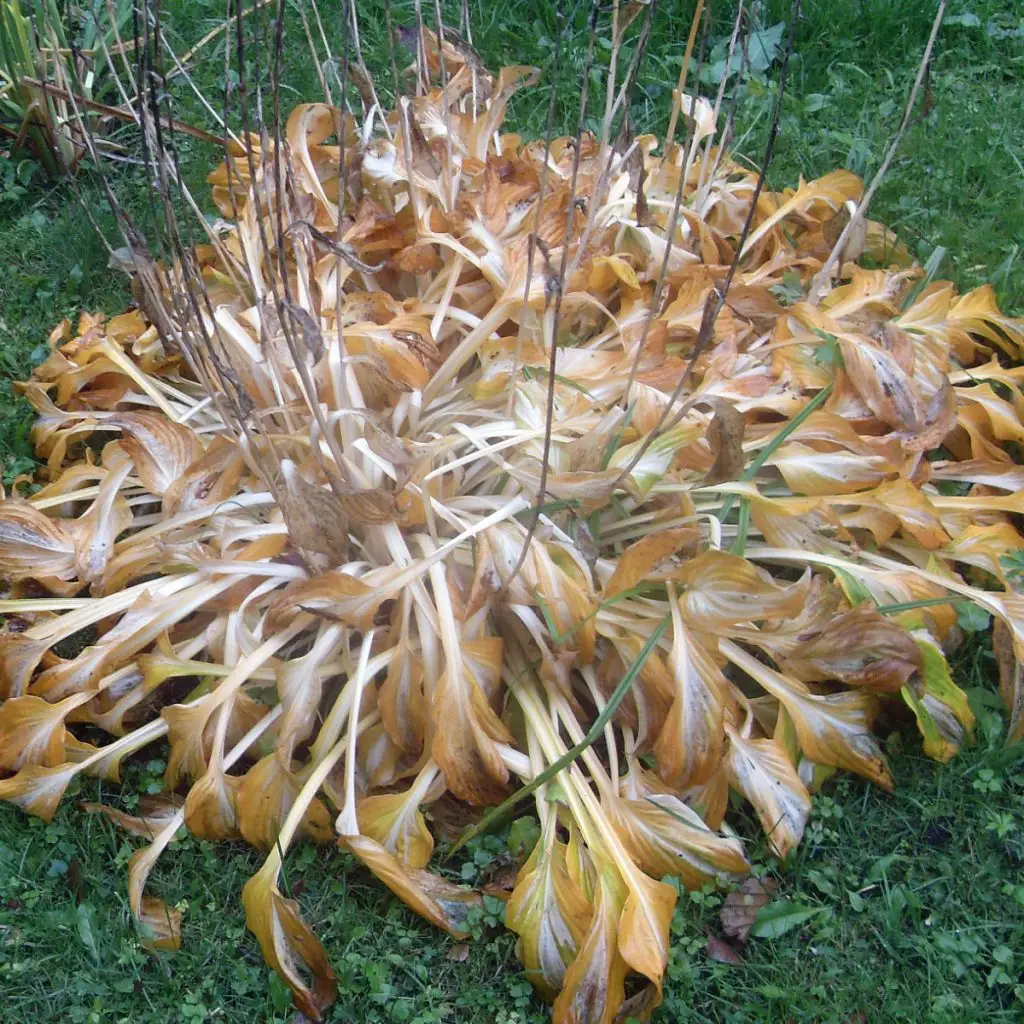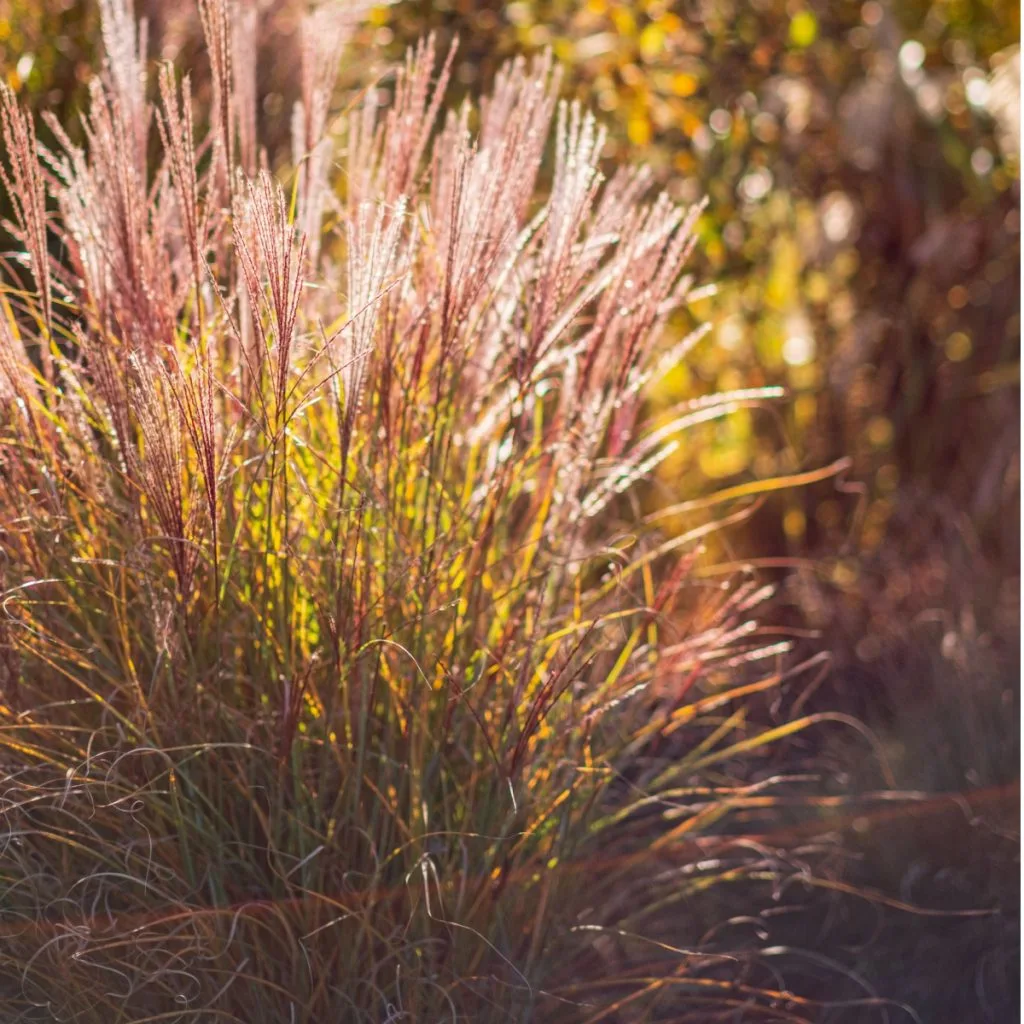One thing is for sure – cutting back perennials in the fall is not only a great way to keep flowerbeds looking neat and tidy through late autumn and winter, but also extremely important for keeping plants vibrant and blooming the following year.
Removing spent foliage and blooms helps a plant focus on recharging it’s roots and resources. It also plays a pivotal role in keeping disease and pest problems at bay as well.
But when it comes to the when and how-to’s of cutting back, many gardeners get a bit leery of the process. Will I injure or kill my plants if I cut them too early. Can I cut them back too much? And – can I cut all of my perennials back, or just some varieties?

All of these are actually great questions – and today’s article will help to answer them all and more! Here is a look at when and how to start cutting back, and which plants should be left standing until spring arrives.
Our Top Tips For Cutting Back Perennials In Late Fall
When & How To Cut Back
As the first light frost hits plants in mid to late fall, the foliage of most perennial plants will begin to die back. Once this occurs, it is the ideal time to begin cutting plants back.
The entire plant does not have to be completely brown or faded to begin the process. In fact, as long as the blooming cycle has completed and the blooms have faded, the entire plant can be pruned back.
The process of trimming back plants is the same for nearly all perennials. Begin by cutting any flowers off the plant. This is especially important for those that compost. Why? Because if you let the flower heads remain, they can easily become seeds that sprout wherever you use your compost. Unfortunately, most home compost piles simply don’t get hot enough to kill off seeds.

Trimming Perennials Down To The Ground
Once the flowers have been removed in the fall, it’s time to start cutting your perennials all the way back. It’s best to take them back to about two to four inches above the soil line. The easiest way to do this is with a sharp pair of hedge trimmers.
The “sharp” part is important, as the plant leaves and stems in the fall can be stringy and tough to cut if your blades are dull. Hedge trimming shears work extremely well at this task, making large, quick cuts. It also keeps the remaining plant stems free of damage. (Product Link : OARA Garden Hedge Shears)
Leaving the plant slightly above the ground has several advantages. First, the remaining foliage helps provide a bit of insulation for the plant through winter.
But leaving the plants above the ground also helps a gardener know where perennials are planted. Cutting them all the way to the ground can make it difficult to know where to add plants and mulch in the fall – and in the spring.
What To Do With The Clippings
So what do you with all of those clippings after cutting back your perennials in the fall? As mentioned earlier, without the flower heads, they make great additions to a fall compost pile.
As long as the plant material that is being cut back is disease free, it’s perfect for the compost pile. It is a good idea to shred it all up before adding to your pile to speed up decomposition. If you do not have access to a chipper / shredder, simply run your lawnmower over the foliage to cut it up before throwing it in the pile.

Dividing Perennials In The Fall
Fall is also an ideal time for dividing many perennials because it allows them to settle in and then hit the ground growing next spring. Hostas, daylilies, sedum, liriope, coral bell, coneflower and many other perennials are all great to divide in the fall.
To divide, simply dig up the plant around the outer edges. Next, lift out and then turn the plant base over and use a sharp shovel or garden knife to divide. Turning over the plant makes it easy to see the roots for equal division.
Replant the divisions right away and mulch for winter protection. The good news is that fall dividing doesn’t require a lot of extra chores such as constant watering!
A Few Perennials That You Should Avoid Cutting Back In The Fall
There are a few perennials that are best to allow them to overwinter with their spring and summer growth in-tact. Some plants need the growth for protection, while others plant’s leaves and spent bloom heads protect and help feed wildlife through the cold, bleak winter months. See our article: 6 Perennials You Need To Divide In The Fall – And How To Do It!
Ornamental grasses are at the top of the list when it comes to providing protection for birds and small animals through winter. Even though you can cut them back in the fall, leaving them up is the better choice for wildlife.

Grasses also do a great job of adding interest to a winter landscape that is often bare. In addition, many gardeners leave the stems and seed heads of perennials such as black eyed Susan, coneflower and shasta daisies up through winter to help feed foraging birds.
A great alternative to leaving them up is to simply cut off the flowers and leave them out for the birds to feed from in another area.
Don’t Cut Back Those Mums!
Last but not least, when it comes to garden mums, it’s always best to leave their foliage completely in tact. With their late fall flowering, the plants need the extra foliage to help protect them from winter’s fury.
Here is to cutting back the perennials in your landscape this fall, and to healthy, big blooming plants next year!
This Is My Garden
Follow Our Facebook Page For Great Gardening Tips And Advice! This Is My Garden Facebook Page
This Is My Garden is a garden website created by gardeners, for gardeners. Jim and Mary Competti have been writing gardening, DIY and recipe articles and books and speaking for over 15 years from their 46 acre Ohio farm. They publish three articles every week, 52 weeks a year. Sign up today to follow via email, or follow along!
